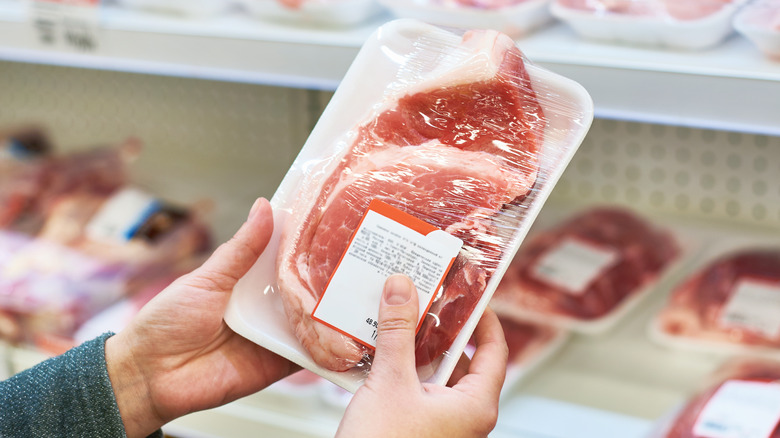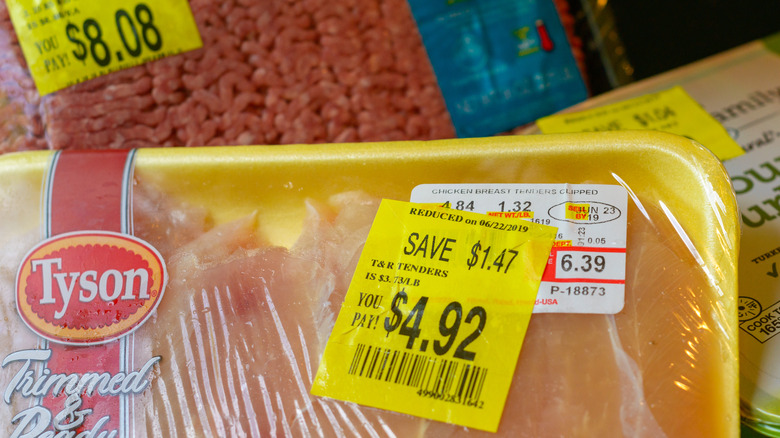Here's What You Should Know About Buying Meats On Clearance
Everyone loves a bargain. Whether it's a crazy supermarket offer or a hidden gem unearthed from the depths of an online marketplace, bagging a cheap deal instantly improves your life. It doesn't matter if you actually need it or not, it's the fact that for a brief moment you are winning at life.
Grocery stores are a great place to head to for discount clearance items, especially usually expensive products that may have had their prices slashed. Meat is a big beast within this category, with 89% of Americans including meat as part of their diet, according to Ipsos. There's clearly high demand for meat, but there are also high prices — The Washington Post reports that meat prices have surged 17% since July 2020, leading to some people bulk buying whole animals.
Given that the USDA estimates 133 billion pounds of food are thrown out every year, buying cheap meat could help to drive down food waste as well as your grocery bills. To ensure you get the best discount deals for your wallet and your health, let's take a look at some top tips to follow when buying clearance meat.
It's important to check clearance meat before buying it
Meat can be covered with clearance stickers if it is close to its sell-by date or has started to deteriorate, according to Allrecipes. Although these factors could put you off from buying clearance meat, it's important to take a closer look to see if the price reductions could actually save you a lot of cash.
The USDA confirms that expiry dates on meat products are not legal requirements, but may be voluntarily applied by manufacturers. Sell-by and use-by dates relate to the optimum quality of the meat, not how safe it is to eat. Sell-by dates help grocery stores to manage their inventory and are again unrelated to safety.
It stands to reason, however, that if there's a foul smell emitting from meat, it's gone bad. The Australian Institute of Food Safety confirms that fresh meat is mostly odorless, and adds that excessive liquid and slime are indicators that food could have spoiled — plus, if you press down on fresh meat it will spring back. The final safety measure is to check the color of the meat. Red meat will be bright red when most fresh, but should still be safe if it's started to turn purple or brown. However, while pink-colored chicken is safe to eat, it should be ditched by the time it's turned gray.

